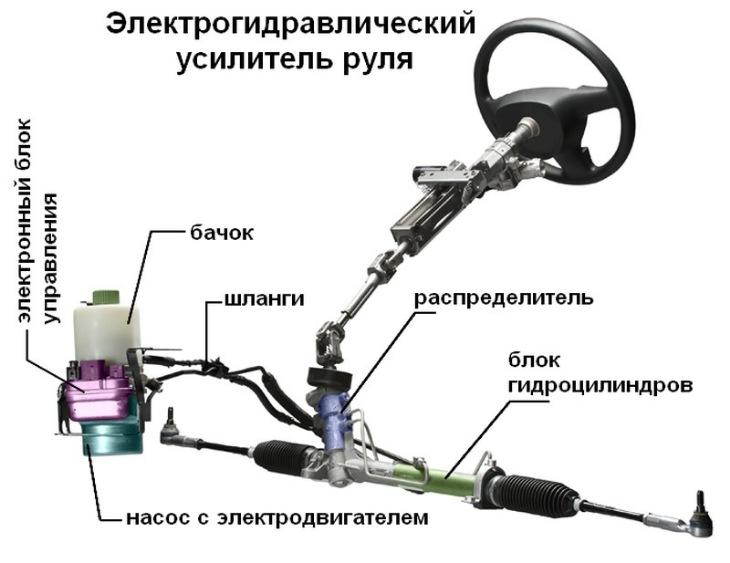
What is the difference between power steering and electric power steering
The vehicle's handling and driving characteristics are largely dependent on the steering system and, in particular, on the power steering, which may differ in type and design. What is power steering, EUR and EGUR and how they work, the AvtoVzglyad portal figured out.
The standard in the global automotive industry is the power steering (GUR), known since the middle of the last century. It is a system of pipelines of low and high pressure, in which a special liquid circulates with the help of a piston pump.
It is fed to a distribution mechanism connected to a torsion bar built into the steering shaft. As soon as we start turning the steering wheel, the oil channels in the distributor open, and the fluid enters the cavity of the hydraulic cylinder, where it sets the rod and piston in motion. They help turn the wheels. Thus, the oil constantly circulates in a closed sealed system through high and low pressure hoses, transferring energy to the wheels.

The operation of the electric power steering (EUR) is provided by an electric motor, a torque sensor and a control unit. When the “steering wheel” is turned, the sensor captures data on the rotation of the torsion shaft, the control unit immediately receives information about the number of engine revolutions and vehicle speed, and in accordance with this, starts the electric motor in a certain mode. As a result, at low speeds, its power is maximum enough to make it easier for the driver to turn the steering wheel, and at high speeds, on the contrary, it is minimal.
In modern cars, an electro-hydraulic amplifier (EGUR) is also used, which is a classic “hydrach”, where an electric pump works instead of a mechanical pump.
All types of power steering have their advantages and disadvantages, so the answer to the question: “Which one is better?” will be ambiguous. The hydraulic booster is characterized by low cost and simplicity of design, maintainability and, importantly, high power. It is no coincidence that it is installed on charged cars, full-size SUVs and trucks.

On the other hand, power steering is distinguished by its bulky design and all the vagaries characteristic of any hydraulic system - hose wear, leaks, clogged filters, sensitivity to temperature changes. All this must be monitored, regularly diagnosed and prevented.
The electric amplifier is devoid of all these problems, it has a compact size and less weight. But at the same time, the EUR has insufficient power, is vulnerable on a bad road, where it can overheat and fail. Failure of the device threatens costly repairs or its complete replacement.
In terms of comfort and feel during operation, as a rule, the electric power is more sensitive and responsive. But at the same time, the power steering is distinguished by better information content and feedback, does not respond to shocks and vibrations on poor coverage.
As a rule, to distinguish from the first moments of movement, which power steering is installed in the car, except for a professional auto mechanic, only a very experienced driver. Most car owners are hardly capable of this, and, therefore, the relevance of such subtle matters as “informativeness”, “responsiveness” and “feedback” of the steering wheel for them is reduced to zero. Although many "experienced carriers" traditionally prefer the classic hydraulic booster.